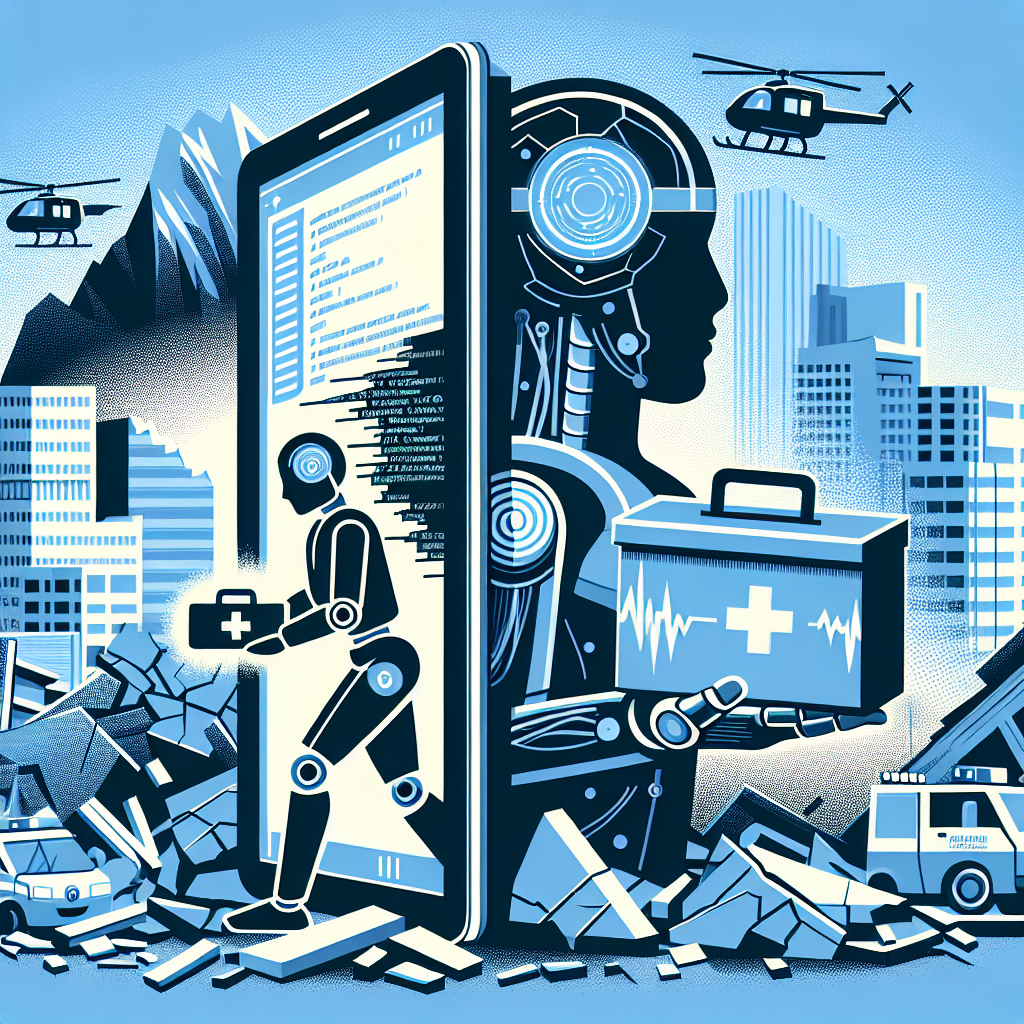In recent years, artificial intelligence (AI) has been increasingly utilized in disaster response to improve preparedness and recovery efforts. From predicting natural disasters to coordinating emergency responses, AI has the potential to revolutionize the way we deal with crises. This article will explore the various ways in which AI is being used in disaster response, as well as the challenges and opportunities that come with its implementation.
One of the key applications of AI in disaster response is in predictive analytics. By analyzing vast amounts of data from various sources such as weather patterns, seismic activity, and social media, AI can help predict when and where a disaster might occur. This can give authorities valuable time to prepare and evacuate affected areas, potentially saving lives.
For example, in the case of hurricanes, AI can analyze historical weather data to predict the intensity and trajectory of a storm. This information can then be used to determine which areas are most at risk and to allocate resources accordingly. Similarly, AI can be used to analyze seismic data to predict where earthquakes are likely to occur, allowing for early warning systems to be put in place.
Another important application of AI in disaster response is in coordinating emergency responses. During a crisis, it is crucial for emergency responders to have real-time information about the situation on the ground in order to make informed decisions. AI can help by analyzing data from various sources such as drones, satellites, and social media to provide a comprehensive picture of the disaster area.
For example, drones equipped with AI technology can be used to assess damage and identify areas that are in need of assistance. AI can also be used to analyze social media posts to identify individuals who may be in distress and in need of help. By providing emergency responders with up-to-date information, AI can help streamline the response effort and ensure that resources are deployed effectively.
AI can also be used to improve the efficiency of disaster recovery efforts. In the aftermath of a disaster, it is crucial to quickly assess the damage and prioritize recovery efforts. AI can help by analyzing satellite imagery to assess the extent of the damage and identify areas that require immediate attention.
For example, AI can be used to analyze satellite images to identify damaged buildings and infrastructure. This information can then be used to prioritize recovery efforts and allocate resources where they are needed most. By automating the process of assessing damage, AI can help speed up the recovery process and ensure that resources are used efficiently.
While the potential benefits of using AI in disaster response are clear, there are also challenges that need to be addressed. One of the main challenges is the need for reliable data. In order for AI to be effective, it requires access to accurate and up-to-date data. This can be a challenge in disaster situations where communication networks may be down and information may be limited.
Another challenge is the issue of privacy and ethics. AI systems often rely on data from individuals, such as social media posts or location data. This raises concerns about privacy and the potential misuse of personal information. It is important for organizations to ensure that they are using AI in a responsible and ethical manner, respecting the rights and privacy of individuals.
Despite these challenges, the potential of AI in disaster response is vast. By harnessing the power of AI, we can improve preparedness and recovery efforts, ultimately saving lives and reducing the impact of disasters. As technology continues to advance, we can expect to see even more innovative applications of AI in disaster response in the future.
FAQs:
Q: How does AI help in predicting natural disasters?
A: AI can analyze data from various sources such as weather patterns, seismic activity, and social media to predict when and where a disaster might occur. This information can give authorities valuable time to prepare and evacuate affected areas.
Q: How does AI help in coordinating emergency responses?
A: AI can analyze data from drones, satellites, and social media to provide real-time information about the situation on the ground. This helps emergency responders make informed decisions and allocate resources effectively.
Q: What are some of the challenges of using AI in disaster response?
A: Challenges include the need for reliable data, concerns about privacy and ethics, and the potential misuse of personal information. Organizations must ensure that they are using AI in a responsible and ethical manner.
Q: What are the potential benefits of using AI in disaster response?
A: AI can help improve preparedness and recovery efforts, streamline emergency responses, and speed up the recovery process. Ultimately, AI can help save lives and reduce the impact of disasters.

